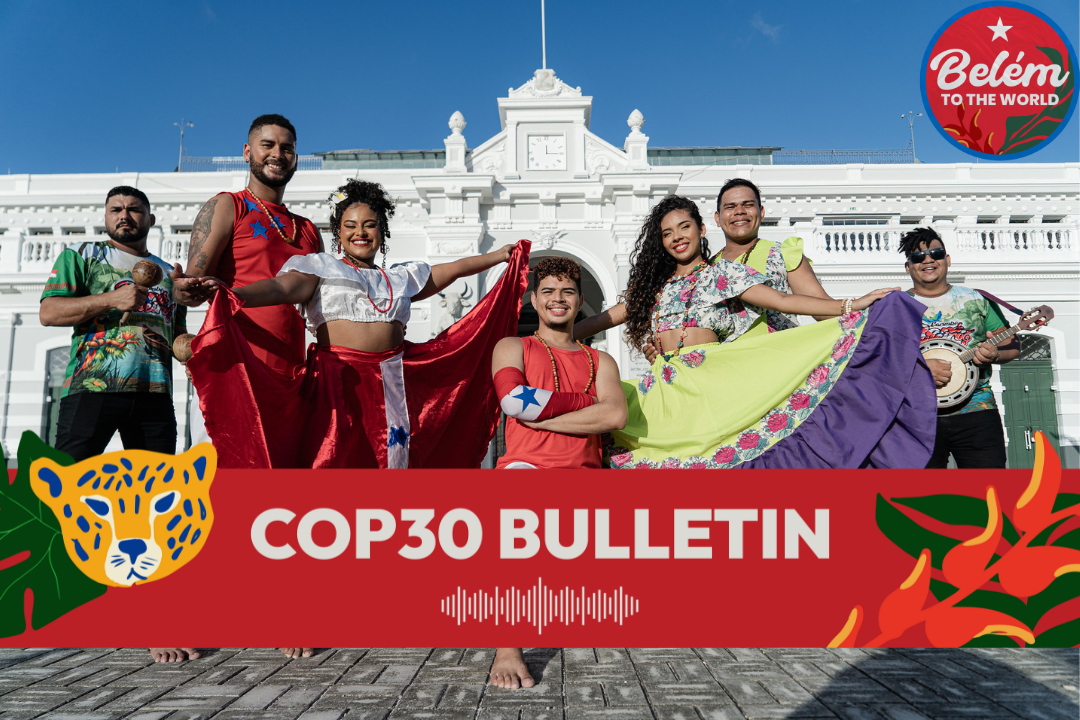COP30 Brasil Bulletin #30 - Belém Showcases the Power of Its Popular Culture
In the final episode of the series, discover the traditions that make Belém a cultural hub: Círio de Nazaré, carimbó, tecnobrega, museums, and much more. Listen to the report and know more.

Report: Maiva D'auria | COP30 Brasil
Voice-over: Inez Mustafa (COP30 Brasil) and Rebece Rodrigues
Reporter: Rooted in popular traditions of music and dance, Belém pulses to its own rhythm. In the third and final episode of the series Belém to the World, we will showcase some of the city’s most striking cultural expressions.
The Círio de Nazaré is among Brazil’s most celebrated events—the country’s largest religious festival, often called the “Christmas of Pará.” Held in October, the Círio draws millions of people into the streets of Belém. Last year, attendance surpassed 2 million faithful. The festival has been inscribed on UNESCO’s Intangible Cultural Heritage list.
Manoel Campos is a devotee of Our Lady and has been photographing the event for 15 years. For him, the Círio is more than a traditional procession—it is a renewal of his faith.
Manoel Campos: I have lived the Círio since I was a child. Seeing it shared with the world brings me immense joy, knowing that others will have the chance to experience what it offers—it is living faith!
Reporter: But faith is not the only force that drives Belém. Music and dance are equally central to the city’s culture. Two rhythms carry the soul of Belém and energize both the city and the world: tecnobrega and guitarrada. Tecnobrega fuses romantic melodies with electronic beats, while guitarrada is driven by guitar solos that blend carimbó, merengue, choro, and even rock.
And when it comes to dance, carimbó takes center stage. Recognized as part of Brazil’s Intangible Cultural Heritage, it blends Indigenous, African, and European influences. Women twirl in colorful skirts—a joyful courtship with their partners.
Mano Piu, a popular artist and founder of the Carimbó Parásileiros group, has already brought Pará’s culture to France and Chile, and remains committed to strengthening the roots of carimbó and celebrating the cultural identity of North Brazil.
Mano Pio: Sharing Belém’s culture with the world is an extraordinary opportunity to share the richness and diversity of our city. Belém is a city that breathes culture. It is home to internationally recognized Amazonian cuisine, unique handicrafts, traditional festivities like carimbó, lambada, and brega, and a warm, welcoming people.
Reporter: He makes a point of emphasizing that the culture of Pará is a message of joy.
Mano Pio: We are a warm and hospitable people. We take great pride in who we are—a community that values our cultural heritage and our connection to nature. I believe our culture can convey a message of hope and love to visitors, showing that it is possible to live in harmony with the environment. It is also a celebration of diversity and inclusion.
Reporter: Oh, and let us not forget Belém’s museums and theaters! The Theatro da Paz, for instance, was the first performance venue built in the Amazon. The building is striking in its grandeur, with flawless acoustics, crystal chandeliers, mosaic floors of fine woods, dozens of artworks, and gold-leaf ornamentation.
The Forte do Presépio preserves the history of the city’s founding. The Museu da Gema showcases the beauty of gemstones and jewelry inspired by Amazonian traditions. The Amazonian Navigation Memorial is a space that reflects the unique features of the Amazon environment and the activities carried out on its rivers. Exhibits of boats—some life-sized, others miniature—together with objects and photographs, illustrate the population’s deep connection to river navigation, a tradition still central to the region’s culture and economy.
This memorial is located in the Mangal das Garças Zoobotanical Park, on the banks of the Guamá River. It is a 40,000-square-meter space filled with nature and culture, home to the Belém Lighthouse, scenic viewpoints, a butterfly garden, and lakes teeming with birds and turtles.
With 40 days to go until COP30, the world will soon turn its eyes to the Amazon, and Belém will be ready—with its voices, flavors, rivers, struggles, and its people—to show that a sustainable future also speaks with a Northern accent.

